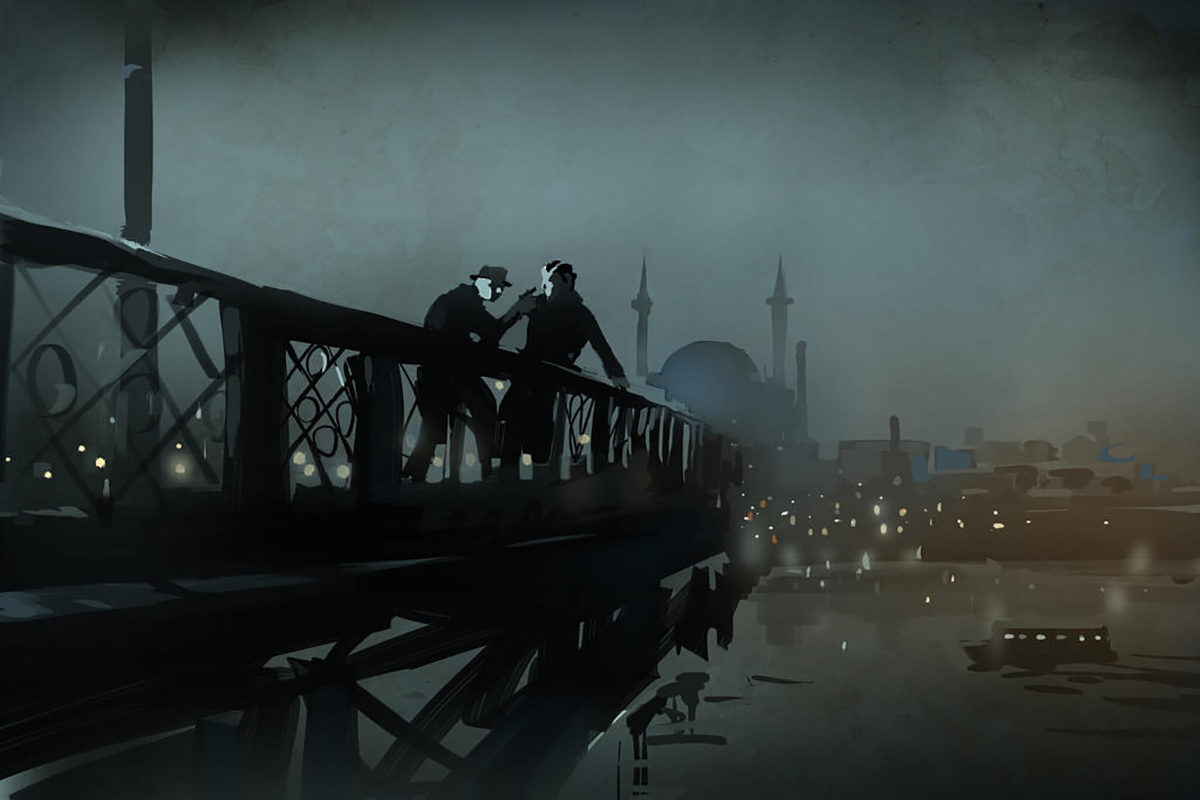
The present article will discuss the state of steampunk culture in Italy. In order to better understand the cultural foundations on which Italian steampunk may be based, we will start with a brief look into the nineteenth century history of the country to go to explore the actual production of steampunk genre creations, including novels and comic books and more, in Italy.
Steampunk as we know it and as it can be found in its representations has solid bases in the nineteenth century. In that period, many countries were living a deep Industrial Revolution during which technical progress became a key part of the life of most people. The public had a strong need to metabolize the magnificent changes they witnessed in their everyday lives and many authors caught that need to write novels where the scientific and technological elements were elaborated and interpreted. Among those authors we can remember Julius Verne, Mary Shelley, H.G. Wells and many other who have significantly inspired modern day steampunk.
In order to understand the position of steampunk in Italy, we should take the nineteenth century industrial development of the country into account.
Italy became a unified state only in 1861 and in most cases, it was a compelled reunification. Before that date Italy was divided in many little states, each following its own political and economic policies, more or less under the influence of major European powers, including France and Austria. The initiative to unite Italy under one crown was undertaken by the Kingdom of Sardinia (which included Genoa, the Piedmont and the Island of Sardinia). The political leader of the Kingdom of Sardinia was Count Camillo Benso di Cavour.
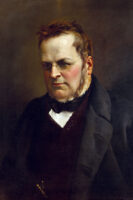
Count Cavour, who was appointed minister of Marine, Commerce and Agriculture in 1850, was also made minister of Finance in 1851 and ultimately prime minister in 1852. A few months after the formation of the Kingdom of Italy in 1861, Count Cavour died. Without his leadership, Italy experienced a decline in its progress toward industrialization.
The Unification of Italy is called, both as period and cultural movement, Risorgimento (“The Resurgence”). Italy had to manage its unification and development in a time when other nations were already more advanced. While Germany moved into a second phase of Industrial Revolution during the second half of the century, Italy had yet to commence a first such revolution.

The poor performance of Italy in the nineteenth century was something of a lost opportunity. Throughout the ages, the Italian people had produced numerous examples of ingenious inventors and scientists: the more famous including Leonardo DaVinci, Galileo Galilei, Alessandro Volta, Guglielmo Marconi. Even in the nineteenth century there were many inventors, but they and their creations are largely forgotten today.
Just to name an example, it is not commonly known that the first working combustion engine was built in 1854 by Eugenio Barsanti (1821-1864) and Felice Matteucci (1808-1887) who patented their invention in England in 1857 (Patent 1655, Improved Apparatus For Obtaining Motive Power From Gases).
Nevertheless, for the above-mentioned reasons, Italy had no proto-science fiction authors as Verne or Wells. The theme was not wholly absent from Italian literature of the time, though. Proto-science fictions themes were sometimes employed, even resulting in a high quality of texts, but such examples were rare.
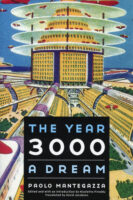
Recently proto-science fiction short stories by those authors have been republished in Italy in the anthology Le Aeronavi dei Savoia (published in English as The Year 3000: A Dream, 2010). The short stories are from the period 1890-1952 and represent interesting elaborations of the fantastic themes realized by Italian authors. If such short stories were written by American authors, today they would be considered classics: voyages on Venus, the destruction of the Moon, alternate histories, life on other planets and the scientific reality of the supernatural are all themes explored in this collection.
Unfortunately, the above-mentioned short stories are exceptions. At the center of the attention of nineteenth century Italian writers, we can find themes as the dealing with a new sociopolitical situation as consequence of the Risorgimento, or the condition of country people in that period.
For similar reasons, science fiction in Italian culture has always been considered a minor genre which deserve little or no attention from critics and the public alike.
Finally, the Italian current of Neorealism (1940-1950s) and the following 1968 culture eliminated any chance for both science fiction and steampunk to spread in Italy. Let’s have a concrete example. All steampunk fans are familiar with The League of Extraordinary Gentlemen, both the comic book and film adaption. Should we like to do a similar work using only characters from nineteenth century Italian novels, we would be in great trouble. There wouldn’t be enough characters to fill such a volume.
The only famous Italian writer who wrote adventurous novels is Emilio Salgari, but very few steam can be found in his work. This is particularly sad as Italian literature produced many interesting pieces in the last two hundred years.
Let’s examine the current situation of steampunk in Italy. For the already mentioned reasons, science fiction is not part of the common culture and is well known and followed only by fans; among the science fiction works little can be found having a steampunk theme, but the few examples are of great interest.


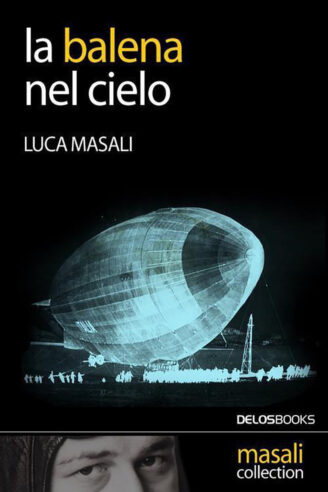
We can begin remembering the novels by Luca Masali, I biplani di D’Annunzio (1995), La perla alla fine del mondo (1999) and La balena del cielo (2008), which are set in an alternative First World War. Matteo Campini is the protagonist of the trilogy, an aviator in the Austro- Hungarian Army who lives extraordinary adventures involving mysteries, time travel and alternate history. The sociopolitical context in which the adventures are set is described with great detail, comprehensive of famous characters of World War II. The novels are written with a quality higher than the average Italian science-fiction production and is sometimes referred as the Bible of the Italian science fiction.
Another interesting novel which is worth mentioning is Raimondo Mirabile, futurista, by Graziano Versace, set in 1911, in Milan, with a plot of both science fiction and conspiracies, with an appreciable, even if vague, steampunk atmosphere.
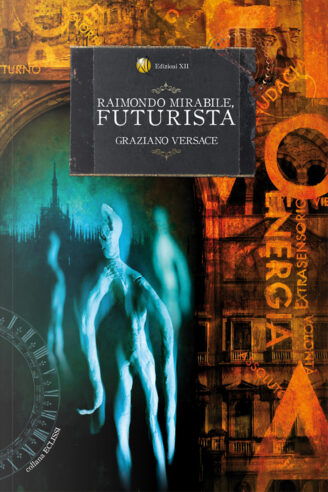

Only one truly steampunk film has been made in Italy: Natale in Casa DeeJay, interpreted by deejays working in Radio Deejay (an Italian radio station) and by well-known people from Italian television and music. The plot is based on A Christmas Carol by Charles Dickens. The ambience and costumes are slightly steampunk as is the technology used by the protagonist to broadcast his radio, the Tubo Deejay.

Regarding comics, the miniseries Greystorm deserves mention, edited by Bonelli, which is one of the major Italian comic publishers. It was a twelve issue miniseries published in 2009 and 2010 with as protagonist the wicked inventor Robert Greystorm. The comic is set in England, Antarctica and on a Pacific Ocean island between 1894 and 1919.
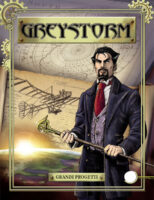
We first meet Robert Greystorm and his glorious dreams for a technological future in Britain. We follow him to the South Pole, where he finds an ancient mummy from which a terrible contagion spreads. The contaminated people turn into zombies, at Greystorm’s order. Led by the voice of an ancient conscience present in the mummy, a voice Greystorm remembers hearing since childhood, he starts his plan to conquer the world. The only people to try to stop him are the sons of his best friend Jason Howard. Howard was Greystorm’s companion for many years, before being killed by him in revenge.
All across this story, we find old looking submarines, airships and other inventions, which make Greystorm a full steampunk adventure.
This series had many ideas that were not original but dealt with them in an interesting manner, creating interesting cues which are unfortunately not developed very much, especially regarding the characters’ evolution across the story. Apart from these flaws, though, Greystorm probably represents the first tentative to bring the steampunk genre to the average public in Italy, and this has major merit.
Regarding comics, it is worth mentioning Rubor Maximum by Claudio Franchino and Le Strabilianti Vicende di Giulio Maraviglia, Inventore by Alessandro Bilotta, Carmine di Giandomenico and Emiliano Colantoni.
In Rubor Maximum, the protagonists are Galvano and Mesmer, who across the years try to take possession of a mysterious device known as the Rubor Maximum. The story spans many epochs (1751, 1847, 1855 and 1912) and many places.
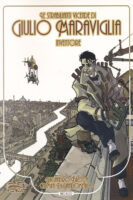
Le Strabilianti Vicende di Giulio Maraviglia, Inventore is set in Rome at the beginning of nineteenth century and depicts a steampunk city with airships, smoke and various steamy devices created by the inventor Fulco Maraviglia.
There is really only one main steampunk community in Italy, the one based on the forum Laboratory of Time created by Federico Gusso (aka Frederick Von Guss). The community is active as a place where Italians can share ideas regarding the various declinations of steampunk, and the website’s staff organize events, including meetings and conventions in concomitance with themed exhibitions and manifestations.
In this community there seems to be, in my opinion, a continuous research for a definition of Italian steampunk, in order to characterize and differentiate it. Nice ideas have been proposed, like Dolce Steel Novo with reference to the Dolce Stil Novo (Italian for “Sweet New Style”), which goes back directly to Dante Alighieri, the author of the Divina Commedia.
As in other countries around the world, also in Italy steampunk is caught and catching the attention of people who are interested in its visual style; in its cultural message or because, as authors, they think that steampunk is the best way to represent their ideas.
Italy’s nineteenth-century history, though markedly different from countries as England and France, is interesting from both a technological and social point of view. Nineteenth- and early-twentieth-century Italy can be a beautiful setting for steampunk adventures, and the works utilizing this settings are there to prove this statement.
Special thanks to Frederick Von Guss and the Laboratory of Time community as well as Duca Carraroran of steamfantasy.it/blog.
This story first appeared in Gatehouse Gazette 15 (November 2010), p. 16-18, with the headline “Local Steampunk: Italy”.


